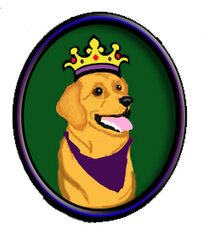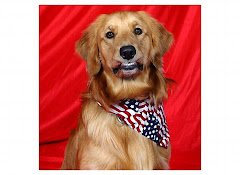Bones? A little something to chew on.
 Dogs love bones. They love to chew on them, bury them, and hide them all over the house (well, at least my Bella does). But are they safe? There is a lot of evidence that they are not.
Dogs love bones. They love to chew on them, bury them, and hide them all over the house (well, at least my Bella does). But are they safe? There is a lot of evidence that they are not.
I can hear dogs all over the world growling at me and saying "Say it ain't so!"
We will look at both sides of the argument.
The U.S. Food and Drug Administration, in a consumer update released on Wednesday, stated that giving your dog a bone is a dangerous practice and can cause serious injury to your pet.
"Some people think it's safe to give dogs large bones, like those from a ham or roast," says Carmela Stamper, D.V.M., a veterinarian in the Center for Veterinary Medicine at the FDA. "Bones are unsafe no matter what their size."
In the Associated Press article, the FDA lists 10 reasons that it's not safe to feed bones to your dog. Among them are broken teeth, bones or bone fragments getting stuck in the esophagus or stomach, mouth or tongue injuries, intestinal blockage due to compacted chewed bones, and rectal bleeding. The worst potential risk is of peritonitis. Peritonitis is a bacterial infection of the abdomen caused when fragments of bone poke holes in the stomach or intestines. It is difficult to treat and very dangerous.
"Your dog needs an emergency visit to your veterinarian because peritonitis can kill your dog," says the FDA.
The Better Business Bureau recently warned pet owners about a particular treat, Dynamic Pet Products' Real Ham Bone for Dogs. It states that a number of pet owners have complained about dogs becoming seriously ill or dying from internal damage from bone fragments. The company denies there is a problem according to the bureau's news release.
"But I've always given my dogs bones" you say, "and I've never had a problem." That may be so, but we need to be very cautious. Let's take a look at the types of bones and what may or may not be safe.
The general consensus is that cooked bones can be very dangerous. Cooking changes the structure of the bone, making it indigestible and easily splintered. The large, weight-bearing bones (such as femurs, soup bones and knuckle bones) are harder to chew up, but they can split into large, sharp pieces that can crack teeth or get lodged in the throat. Pet stores sell these like crazy. I have stopped giving them to my guys because they do tend to split into sharp pieces that could easily be swallowed. It happens almost every time. I have to say, though, that my guys are very aggressive chewers.
Those who feed their dogs bones reason that canines in the wild eat bones all the time and never have any problems. That isn't exactly true. Yes, wild canids eat bones....raw ones. There have been documented cases of wolves choking or starving to death from bones stuck in the throat. It isn't common, but it does happen.
Okay, so what about raw bones? I'm sure the RAW food advocates are chomping at the bit here.
According to those who feed RAW or BARF food diets, raw bones are completely digestible and not dangerous for your pet. They say raw bones rarely splinter and rarely cause any problems. Raw marrow bones, which are very thick and have marrow inside them, are very sturdy and not likely to splinter.
The health benefits of feeding raw, meaty bones are superior to any other diet, they say. The RAW diets are designed to emulate the diet of wild canids. Proponents of this diet feed raw, meaty bones almost exclusively, and say they provide excellent nutrition.
"Bones from prey are required by wolves as the major source of calcium and phosphorus for the maintenance of their own skeletons. Bones, in fact, are a surprisingly well-balanced food for canids." (Mech, L.D. 2003. Wolves: Behavior, Ecology, and Conservation. Pg 125)
Of course, wild canids feed on the whole carcass, swallowing meat, hide and hair with the bones. This may provide some protection from any possible gastrointestinal problems.
RAW food advocates do acknowledge there is a very minimal risk from feeding raw bones, and therefore it is important to understand which bones are safe and which ones should be avoided.
Raw bones should be chosen according to the size and chewing ability of your dog. Whole chicken and turkey necks, pigs feet, chicken wings, and marrow bones are fed to dogs as a meal, along with certain fruits and vegetables. Bones should be fed in appropriately sized pieces for your dog. In other words, don't feed tiny chicken wings to a great dane. He may try to swallow them whole. Larger dogs are often fed a whole chicken or leg quarter. Smaller, cut bones seem to be the biggest risk since they can have sharp edges and dogs will try to gulp them down.
As stated earlier, the large weight-bearing bones of large herbivores, even raw, are prone to splitting into sharp pieces and have the potential to cause cracked teeth.
If you feed a raw food diet, choose raw meaty bones that are in as whole a condition as possible. Make sure the bones are surrounded by plenty of meat. Don't feed bones with little or no meat on them. Too much bone can lead to constipation. If the bones don't have enough meat on them, add some plain meat to their meal as well.
If your dog chews the bones up too quickly and tries to gulp down the pieces, feed him meaty bones that are frozen or partially frozen. The dog will have to work much harder to chew it up, which slows them down a great deal.
Safe bones will satisfy your dog's desire to chew, prevent boredom, and relieve anxiety. The chewing action will help scrape plaque from their teeth, diminish bad breath, and stimulate the gums. Bones will provide needed calcium and other nutrients. A bad bone, however, can be very dangerous, costly, and can cause much grief.
I suppose the point here is that whether you choose to give your dog cooked bones or raw ones, always supervise them when they eat. If you do feed bones, be sure to choose appropriate sizes and types for your dog. If the pieces become small enough to be swallowed whole, or if they should happen to splinter, throw them away.
As always, I encourage you to do your own research before making a decision.
Next time we will look at alternatives to bones for chewing (rawhide, nylon bones, pig ears, etc.)













































No comments:
Post a Comment